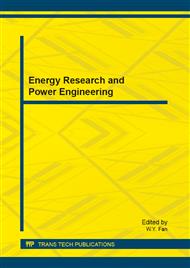[19]
Z. Cao, M. Tan, S. Wang, Y. Fan, and B. Zhang, The optimization research of formation control for multiple mobile robots, in Proceedings of the 4th World Congress on Intelligent Control and Automation, 2002, pp.1270-1274.
DOI: 10.1109/wcica.2002.1020786
Google Scholar
[2]
D. D. Dudenhoeffer and M. P. Jones, A formation behavior for large-scale micro-robot force deployment, in Proceedings of the Simulation Conference 2000, pp.972-982.
DOI: 10.1109/wsc.2000.899900
Google Scholar
[3]
G. L. Mariottini, F. Morbidi, D. Prattichizzo, G. J. Pappas, and K. Daniilidis, Leader-Follower Formations: Uncalibrated Vision-Based Localization and Control, in IEEE International Conference on Robotics and Automation, 2007, pp.2403-2408.
DOI: 10.1109/robot.2007.363679
Google Scholar
[4]
J. Shao, G. Xie, and L. Wang, Leader-following formation control of multiple mobile vehicles, IET Control Theory & Applications, vol. 1, pp.545-552, (2007).
DOI: 10.1049/iet-cta:20050371
Google Scholar
[5]
M. Lindhe, P. Ogren, and K. H. Johansson, Flocking with Obstacle Avoidance: A New Distributed Coordination Algorithm Based on Voronoi Partitions, in Proceedings of the IEEE International Conference on Robotics and Automation, 2005, pp.1785-1790.
DOI: 10.1109/robot.2005.1570372
Google Scholar
[6]
K. Fujibayashi, S. Murata, K. Sugawara, and M. Yamamura, Self-organizing formation algorithm for active elements, in Proceedings of the IEEE Symposium on Reliable Distributed Systems, 2002, pp.416-421.
DOI: 10.1109/reldis.2002.1180220
Google Scholar
[7]
G. Antonelli. Stability analysis for prioritized closedloop inverse kinematic algorithms for redundant roboticsystems. IEEE Transactions on Robotics, 25(5): 985–994, October (2009).
DOI: 10.1109/tro.2009.2017135
Google Scholar


